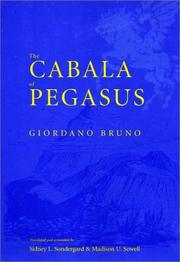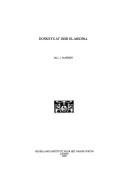| Listing 1 - 8 of 8 |
Sort by
|
Book
ISBN: 233514541X Year: 2015 Publisher: [Place of publication not identified] : Editions Ligaran,
Abstract | Keywords | Export | Availability | Bookmark
 Loading...
Loading...Choose an application
- Reference Manager
- EndNote
- RefWorks (Direct export to RefWorks)
Donkeys --- Human-animal relationships --- Ass, Small --- Burros --- Domestic ass --- Equus africanus asinus --- Equus asinus asinus --- African wild ass --- Equus --- Livestock --- Hinnies --- Mules
Book
ISBN: 9781612348414 1612348416 9781612348438 1612348432 9781612348117 9781612348421 1612348114 9781612348117 Year: 2016 Publisher: Lincoln : Baltimore, Md. : Potomac Books, Project MUSE,
Abstract | Keywords | Export | Availability | Bookmark
 Loading...
Loading...Choose an application
- Reference Manager
- EndNote
- RefWorks (Direct export to RefWorks)
Iraq War, 2003-2011 --- Donkeys --- Ass, Small --- Burros --- Domestic ass --- Equus africanus asinus --- Equus asinus asinus --- African wild ass --- Equus --- Livestock --- Hinnies --- Mules --- Folsom, John D.
Book
ISBN: 1839623179 1839623160 Year: 2020 Publisher: London : IntechOpen,
Abstract | Keywords | Export | Availability | Bookmark
 Loading...
Loading...Choose an application
- Reference Manager
- EndNote
- RefWorks (Direct export to RefWorks)
Horses. --- Donkeys. --- Horses --- Diseases. --- Ass, Small --- Burros --- Domestic ass --- Equus africanus asinus --- Equus asinus asinus --- African wild ass --- Equus --- Livestock --- Hinnies --- Mules --- Equus caballus --- Farriery --- Hippology --- Horse --- Domestic animals --- Pachyderms
Book
ISBN: 9780198749233 0198749236 Year: 2018 Publisher: Oxford : Oxford University Press,
Abstract | Keywords | Export | Availability | Bookmark
 Loading...
Loading...Choose an application
- Reference Manager
- EndNote
- RefWorks (Direct export to RefWorks)
Donkeys carried Christ into Jerusalem while in Greek myth they transported Hephaistos up to Mount Olympos and Dionysos into battle against the Giants. They were probably the first animals that people ever rode, as well as the first used on a large-scale as beasts of burden. Associated with kingship and the gods in the ancient Near East, they have been (and in many places still are) a core technology for moving people and goods over both short and long distances, as well as a supplier of muscle power for threshing and grinding grain, pressing olives, raising water, ploughing fields, and pulling carts, to name just a few of the uses to which they have been put. Yet despite this, they remain one of the least studied, and most widely ignored, of all domestic animals, consigned to the margins of history like so many of those who still depend upon them. Spanning the globe and extending from the donkey's initial domestication up to the present, this book seeks to remedy this situation by using archaeological evidence, in combination with insights from history and anthropology, to resituate the donkey (and its hybrid offspring such as the mule) in the unfolding of human history, looking not just at what donkeys and mules did, but also at how people have thought about and understood them.
Donkeys --- Mules --- Mammal remains (Archaeology) --- Mammalian remains (Archaeology) --- Mammals in archaeology --- Animal remains (Archaeology) --- Archaeology --- Livestock --- Horses --- Ass, Small --- Burros --- Domestic ass --- Equus africanus asinus --- Equus asinus asinus --- African wild ass --- Equus --- Hinnies --- History --- Methodology

ISBN: 0300092172 9786611729820 1281729825 030012791X Year: 2002 Publisher: New Haven (Conn.) Yale University Press
Abstract | Keywords | Export | Availability | Bookmark
 Loading...
Loading...Choose an application
- Reference Manager
- EndNote
- RefWorks (Direct export to RefWorks)
Giordano Bruno's Cabala del cavallo pegaseo (The Cabala of Pegasus) grew out of the great Italian philosopher's experiences lecturing and debating at Oxford in early 1584. Having received a cold reception there because of his viewpoints, Bruno went on in the Cabala to attack the narrow-mindedness of the university--and by extension, all universities that resisted his advocacy of intellectual freethinking.The Cabala of Pegasus consists of vernacular dialogues that turn on the identification of the noble Pegasus (the spirit of poetry) and the humble ass (the vehicle of divine revelation). In the interplay of these ideas, Bruno explores the nature of poetry, divine authority, secular learning, and Pythagorean metempsychosis, which had great influence on James Joyce and many other writers and artists from the Renaissance to the modern period.This book, the first English translation of The Cabala of Pegasus, contains both the English and Italian versions as well as helpful annotations. It will have particular appeal to all Renaissance scholars and those interested in the Renaissance cabalistic underpinnings of modern literature.
Donkeys --- Mental efficiency --- Efficiency, Mental --- Inefficiency, Intellectual --- Intellectual inefficiency --- Intellect --- Ass, Small --- Burros --- Domestic ass --- Equus africanus asinus --- Equus asinus asinus --- African wild ass --- Equus --- Livestock --- Hinnies --- Mules --- History

ISSN: 09270043 ISBN: 9062582192 Year: 2005 Publisher: Leiden Nederlands Instituut voor het Nabije Oosten
Abstract | Keywords | Export | Availability | Bookmark
 Loading...
Loading...Choose an application
- Reference Manager
- EndNote
- RefWorks (Direct export to RefWorks)
Donkeys --- Inscriptions, Egyptian --- Demotic inscriptions --- Egyptian inscriptions --- Egyptian language --- Hieratic inscriptions --- Hieroglyphic inscriptions (Egyptian) --- Inscriptions, Demotic --- Inscriptions, Hieratic --- Inscriptions, Hieroglyphic (Egyptian) --- Ass, Small --- Burros --- Domestic ass --- Equus africanus asinus --- Equus asinus asinus --- African wild ass --- Equus --- Livestock --- Hinnies --- Mules --- Deir el-Medina Site (Egypt) --- Dayr al-Madīnah Site (Egypt) --- Egypt --- Antiquities --- Âne --- Inscriptions égyptiennes --- Deir el-Médineh (Égypte ; site archéologique) --- Égypte
Book
ISBN: 1575066432 9781575066431 9781575062136 1575062135 Year: 2011 Publisher: Winona Lake, IN : Eisenbrauns,
Abstract | Keywords | Export | Availability | Bookmark
 Loading...
Loading...Choose an application
- Reference Manager
- EndNote
- RefWorks (Direct export to RefWorks)
In this volume, Kenneth Way explores the role of donkeys in the symbolism and ceremonies of the biblical world. His study stands alone in providing a comprehensive examination of donkeys in ancient Near Eastern texts, the archaeological record, and the Hebrew Bible. Way demonstrates that donkeys held a distinct status in the beliefs and rituals of the ancient Near East and especially Canaan-Israel.The focus on ceremony and symbol encompasses social and religious thoughts and practices that are reflected in ancient texts and material culture relating to the donkey. Ceremonial considerations include matters of sacrifice, treaty ratification, consumption, death, burial, “scapegoat” rituals, and foundation deposits; symbolic considerations include matters of characterization, association, function, behavior, and iconographic depiction. However, the distinction between ceremony and symbol is not strict. In many cases, these two categories are symbiotic. The need for this study on donkeys is very apparent in the disciplines that study the biblical world. There is not a single monograph or article that treats this subject comprehensively. Philologists have discussed the meaning of the Amorite phrase “to kill a jackass,” and archaeologists have discussed the phenomenon of equid burials. But until now, neither philologists nor archaeologists have attempted to pull together all the ceremonial and symbolic data on donkeys from burials, ancient Near Eastern texts, and the Hebrew Bible. Way’s study fills this void.
Semites --- Donkeys --- Ass, Small --- Burros --- Domestic ass --- Equus africanus asinus --- Equus asinus asinus --- African wild ass --- Equus --- Livestock --- Hinnies --- Mules --- Religion. --- Religious aspects --- History. --- Middle East --- Asia, South West --- Asia, Southwest --- Asia, West --- Asia, Western --- East (Middle East) --- Eastern Mediterranean --- Fertile Crescent --- Levant --- Mediterranean Region, Eastern --- Mideast --- Near East --- Northern Tier (Middle East) --- South West Asia --- Southwest Asia --- West Asia --- Western Asia --- Orient --- Religious life and customs. --- Ezels. --- Oude Testament. --- 11.42 history of Old Testament times.
Book
ISBN: 9042917806 9789042917804 Year: 2006 Volume: 33 Publisher: Leuven: Peeters,
Abstract | Keywords | Export | Availability | Bookmark
 Loading...
Loading...Choose an application
- Reference Manager
- EndNote
- RefWorks (Direct export to RefWorks)
Palm Sunday --- Donkeys --- Processions, Religious --- History --- Religious aspects --- Christianity --- Academic collection --- #GBIB:SMM --- C1 --- volkscultuur --- West-Europa (x) --- iconografie --- C3 --- plastische kunsten --- schilderkunst --- processies --- Hoegaarden [gemeente in arrondissement Leuven - BE] --- 264-057 --- 264-041.52 --- 22 --- 949.32 LEUVEN --- Kerken en religie --- Kunst en cultuur --- Processies --- Palmzondag. Goede week. Witte donderdag. Goede vrijdag --- Bijbel --- Geschiedenis van België: hertogdom Brabant; provincie Brabant--(reg./lok.)--LEUVEN --- Exhibitions --- 949.32 LEUVEN Geschiedenis van België: hertogdom Brabant; provincie Brabant--(reg./lok.)--LEUVEN --- 264-041.52 Palmzondag. Goede week. Witte donderdag. Goede vrijdag --- 264-057 Processies --- easel paintings [paintings by form] --- Christian special devotions --- processions --- sculpture [visual works] --- illuminated manuscripts --- religious art --- Hoegaarden --- Ecclesiastical processions --- Processions, Ecclesiastical --- Religious processions --- Rites and ceremonies --- Second Passion Sunday --- Fasts and feasts --- Holy Week --- Ass, Small --- Burros --- Domestic ass --- Equus africanus asinus --- Equus asinus asinus --- African wild ass --- Equus --- Livestock --- Hinnies --- Mules --- 245.2 --- Processies--Hoegaarden --- Geschiedenis van België: hertogdom Brabant--provincie Brabant--(reg./lok.)--LEUVEN --- Palm Sunday - Europe - History - Exhibitions --- Donkeys - Religious aspects - Christianity - History - Exhibitions --- Processions, Religious - Christianity - History - Exhibitions --- Processions, Religious - Europe - History - Exhibitions
| Listing 1 - 8 of 8 |
Sort by
|

 Search
Search Feedback
Feedback About UniCat
About UniCat  Help
Help News
News